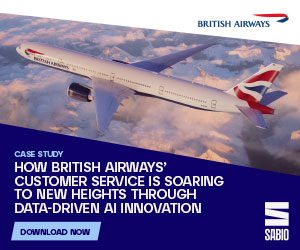Melissa Cowdry at Odigo explains that challenging times are impacting consumer perception. What does it mean for the evolution of customer service?
In March 2023 the European Contact Centre and Customer Service Exchange (ECCCSE) surveyed 6000 consumers from six different European countries.
Against the backdrop of supply chain issues, war in Ukraine and unpopular political policies, the ECCCSE made seven poignant discoveries. Two in particular suggest that the ongoing evolution of customer service possibly needs a change in direction.
- More people perceive a decline, rather than an improvement, in customer service standards
- Consumers who are finding managing their finances more difficult are more likely to think customer service standards are declining.
These findings were consistent across all six countries, despite variations in communication style, level of industry tech adoption and political environments. This may not be surprising, but it is significant.
As the ECCCSE and contributing professionals in the research point out, there are two important conclusions to be drawn and these have implications for contact centres providing service.
The Evolution of Customer Service in an Age of Enhanced Expectations
Previous experience is highly influential, it’s one of the standards consumers use to judge service quality.
Great experiences fuel higher expectations, poor ones set the bar much lower. Be it a luxury brand or a budget one, comparison by consumers is inevitable, and the effect is highlighted in the research findings.
Consumers are being exposed to a wide spectrum of experiences and quality due to varying levels of contact centre investment in digitalisation and channel integration. Increasingly savvy to what organisations can achieve, consumers’ expectations are rising.
This is particularly true in times of uncertainty when the need for support and urgency of resolution increase.
The aspiration to meet these escalating standards will be reflected in the evolution of customer service.
However, it’s important not to mistake rising customer expectations solely as emerging digital needs.
At its core, the driving force is the same: rapid resolution. High-tech and digital solutions merely introduce newfound efficiencies, underpinning the strategies of the world’s most successful organisations.
However, when poorly applied, tech can create high-effort journeys marked by frustration-induced channel switching and repetitive interactions; the polar opposite of what customers are looking for. This leads to the second conclusion and the concept of appropriate service.
Responding to Context: The Evolution of Customer Service Has Come Full Circle
Recent worldwide events and instability are clearly impacting European consumers. Across all six countries surveyed there were high levels of uncertainty and financial difficulty.
With increasing vulnerability, the urgency and complexity of queries shoot up and the consequences of an interaction may also have wider ramifications.
It’s not just a refund, it’s preventing going into an overdraft and incurring extra fees. It’s not just a delivery slot, it’s ensuring a carefully researched item that fits within a tight budget can be delivered and checked for damage around a hybrid working schedule.
Though widespread digitalisation and well-integrated 24/7 self-service touchpoints offer many customers welcome convenience, every contact centre professional knows the channel of choice for queries in this context — voice.
Contact centres who have put all their eggs in one basket, investment and development-wise, hoping digitalisation will provide adequate service while rationalising costs may well see rising levels of customer dissatisfaction.
This doesn’t mean they haven’t put together an amazing spectrum of touchpoints. It comes down to whether those journeys are appropriate in the current context for service.
If not, front-line agents can be exposed to higher volumes of emotionally charged and complex interactions, compounded by ‘unsatisfactory self-service’.
Even considering the current climate, providing self-service is not simply a contact centre driven efficiency measure. It is a preferred channel for many customers.
However, promoting these services shouldn’t mean creating barriers or increasing the effort needed to reach an agent on the voice channel. This only increases frustration and negative sentiment.
The result is that after the initial effort needed to simply find the contact number, even more effort must be expended by agents to overcome customer sentiment and establish enough rapport to find a satisfactory resolution.
Supporting customers efficiently and effectively requires clear unobstructed pathways to rapid resolution.
The emphasis, in the ongoing evolution of customer service, is clearly returning to the voice channel.
Not only is it seen as the most reliable route for complex query resolution it also provides reassurance in sensitive situations.
“I’m changing your records now”, “I’ve finalised your request” or “I’ve set up your new payment schedule” provide a tangible sense of progress and closure which diffuses customer anxiety.
The Evolution of Contact Centre Services
If customers have higher expectations when it comes to rapid resolution and need easy access to agent-led support for complex and sensitive queries, how can contact centres optimise their services to meet these needs in a sustainable way?
- Proactively promote appropriate self-service touchpoints.
- Make it easy for customers to start with self-service where appropriate.
- Have agents on standby to assist new users and convert them into repeat users.
- Provide easy routes to escalation so customers are more willing and less frustrated when they try self-service first.
- Ensure the touchpoints you offer are promoting not delaying resolution by monitoring customer satisfaction and effort scores.
- Make it easy to switch from voice to alternative channels.
- Don’t make the contact centre number difficult to find but do make sure those who reach your IVR really want/need to be there. Automated and self-service options are especially welcome during peak waiting times.
- Optimise the voice channel.
- Ensure agent training is up-to-date and reflects the real drivers of customer contact.
- Automate as many elements of working process as possible to streamline the flow of interactions and remove the small but high-frequencies tasks which eat into agent time.
- Optimise routing according to skills sets and priority service registers to ensure queries are dealt with appropriately not just sequentially.
- Use AI agent assist to provide next steps, knowledge articles and prompts to help agents achieve resolution.
Utilise UCaaS connectors so experts from outside the contact centre can become an extended resource available to support first call resolution through direct interaction with customers.
Author: Guest Author
Published On: 2nd Nov 2023 - Last modified: 9th Dec 2024
Read more about - Guest Blogs, Odigo





































